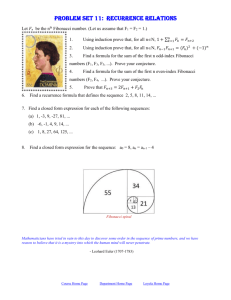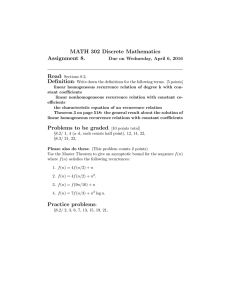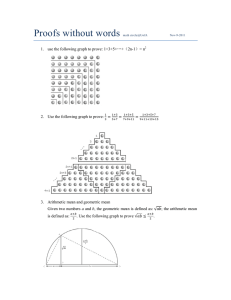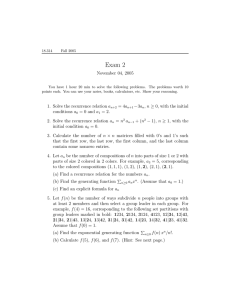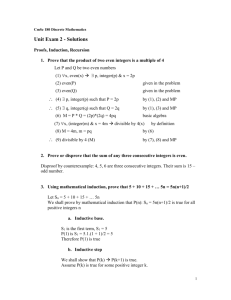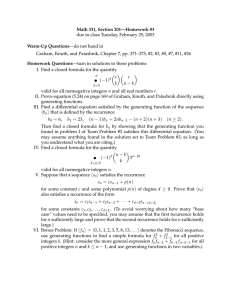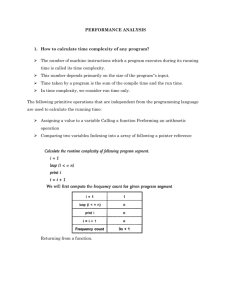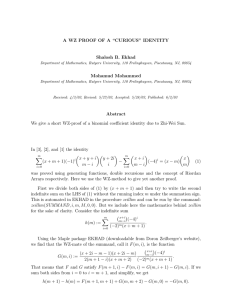csc 415 Review for Final WITH SOLUTIONS
advertisement
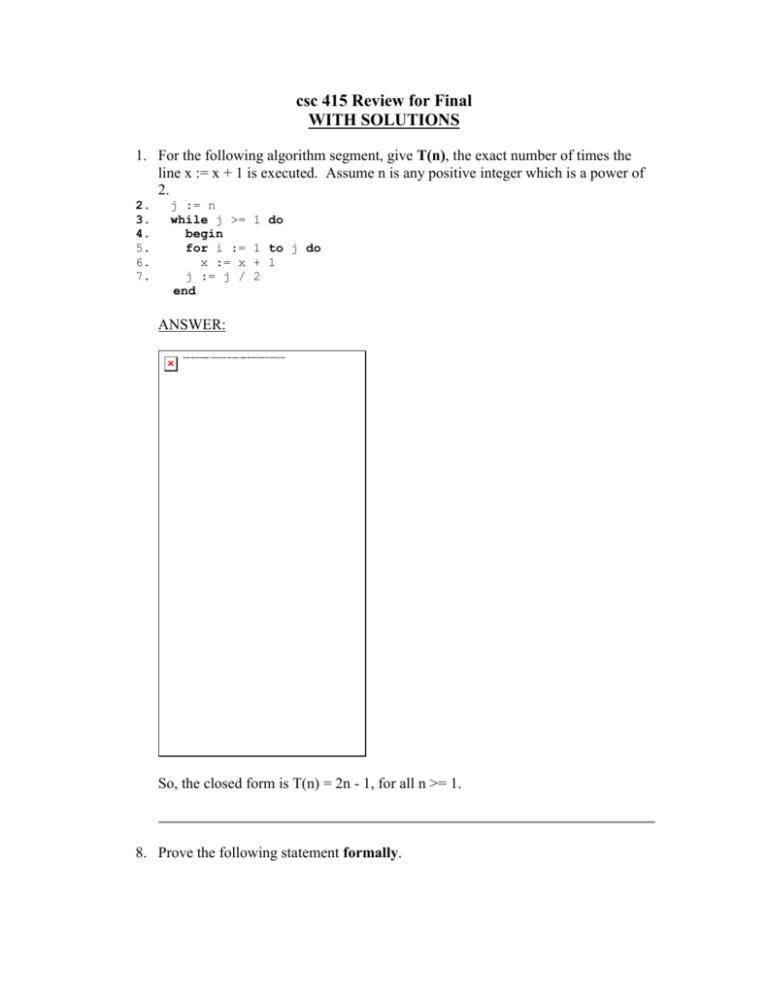
csc 415 Review for Final WITH SOLUTIONS 1. For the following algorithm segment, give T(n), the exact number of times the line x := x + 1 is executed. Assume n is any positive integer which is a power of 2. 2. 3. 4. 5. 6. 7. j := n while j >= begin for i := x := x j := j / end 1 do 1 to j do + 1 2 ANSWER: So, the closed form is T(n) = 2n - 1, for all n >= 1. 8. Prove the following statement formally. Suppose f(x) = O(xm) and g(x) = O(xn), where m, n are positive integers. Then f(x)*g(x) = O(xm+n). ANSWER: Proof: By defnition of big-Oh notation and the given assumptions on f and g, we know there exist c1, c2, x1, x2 such that f(x) <= c1 * xm (for all x >= x1) and g(x) <= c2 * xn (for all x >= x2). Since m, n are positive integers, we get f(x) * g(x) < = c1 * c2 * x(m+n), for all x >= max(x1, x2). So, we can take c = c1 * c2, and n0 = max(x1, x2). 9. The closed form for fibonacci sequence is given/solved as follows. a. Verify that this formula produces the same values as the recurrence relation for n = 1 and 2. ANSWER: For n = 1: o Recurrence: f(1) = 1 ... by definition of fibonacci sequence o Closed form: So, frecurrence (1) = fclosed (1). For n = 2: o Recurrence: f(2) = 2 ... by definition of fibonacci sequence o Closed form: So, frecurrence (2) = fclosed (2). b. Prove by strong mathematical induction that this formula is correct. ANSWER: Theorem: Fibonacci sequence defined recursively as f(n) = f(n-1) + f(n-2), f(1) = 1, f(2) = 2 has an equivalent closed form Proof: by strong mathematical induction. Basic Step (n = 1, 2): As shown in part a. ... (A) Inductive Step: Assume the closed form holds for all f(i), 1 <= i < n. Show the closed form holds for f(n). From (A) and (B), the theorem is true. 10. A recursive algorithm find_min, which finds the minimum of a finite sequence of numbers, is given as follows (Section 3.4, Exercise #12). Input: The sequence s1, s2, .., sn and the length n of the sequence. Output: The minimum value in the sequence. procedure find_min(s, n) 1. if n = 1 then 2. return s1 3. else 4. begin 5. x := find_min(s, n-1) 6. if x < sn then 7. return x 8. else 9. return sn end find_min Let T(n) be the number of times the comparison x < sn (line 6) is performed in the worst case. a. Find a recurrence relation and an initial condition for T(n). ANSWER: T(n) = T(n-1) + 1, T(1) = 0 b. Solve the recurrence relation you answered in a. and derive a closed form. ANSWER: I skip the derivation here, assuming you know how to do this very well already. The closed form is T(n) = n - 1, for all n >= 1
